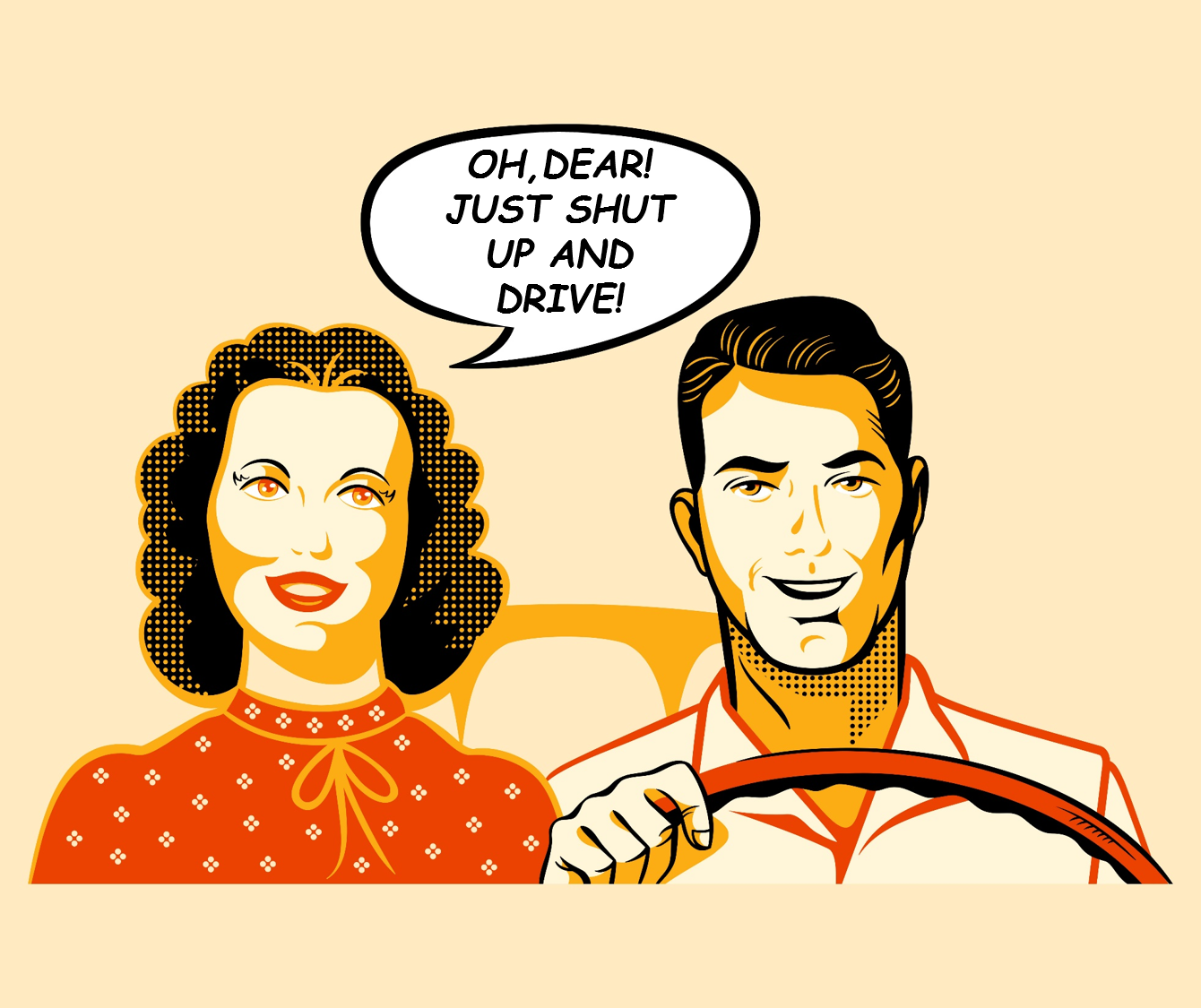
As I sit in my home office here in Detroit – known worldwide as “The Motor City” – my thoughts wander a lot to cars, and what they will continue to mean to the radio industry as COVID-19 rocks our world.
This year marks the 90th birthday of the car radio. Motorola (still very much around) was the manufacturer that first introduced this brilliant invention to America. And the trend of driving and listening to the radio has always been strong.
So much so that radio broadcasters here in the U.S. – and around the world – are dependent on the age-old marriage of cars and radio which I often refer to as a peanut butter & jelly relationship.
COVID-19 has disrupted everything in our lives these last 100 days – and in-car radio listening has not been exempt from the turbulence. That goes a long way toward explaining why cume listening to radio – in essence, the medium’s “circulation” – has been dented, and then some – by the lockdown and its reverberations.
But there are three emerging stories revolving around the automobile – and radio – that promise to impact broadcasters this summer and through the end of the year – at least. And if radio plays them well, the year could end on an uptrend in both ratings and revenue.
1. We’re driving again* – Both in diary and meter-measured markets, Nielsen is seeing the unmistakable trend that consumers are back behind the wheel, pandemic or not. True, commuting patterns have been disrupted, especially impacting radio’s drive time listening levels. But the more audiences are back on four wheels, the better radio will fare.
We know from our many Techsuveys that the biggest portion of in-car audio consumption – especially among those who are already fans of the medium – goes to broadcast radio. While SiriusXM has shown growth in recent years, AM/FM radio still rules the dashboard.
And in our most recent COVID-19 survey presented four weeks ago, we were already seeing strong signs of resurgence in in-car radio listening. The chart below shows the top five activities respondents told us they planned on doing in the coming week. Driving in a car (and gassing it up) displayed the strongest growth.
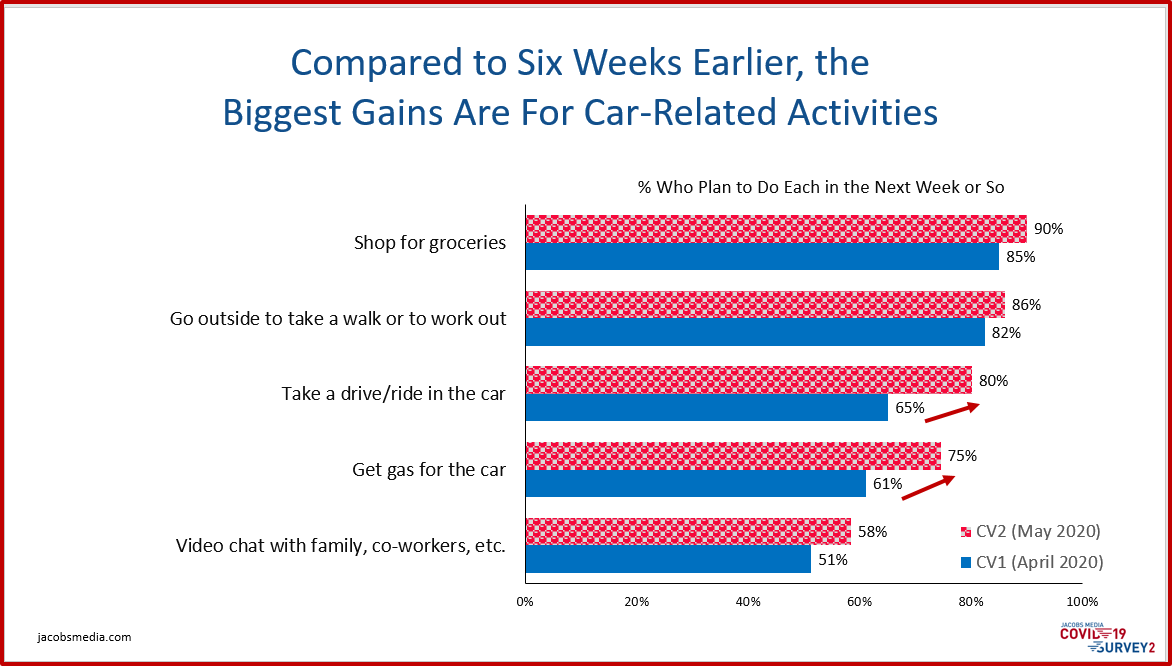
This is a great sign – and it also reflects the attitudes and opinions of core radio listeners more than five weeks ago. Since the Memorial Day holiday, most cities in America have seen traffic increasing as more and more consumers hit the road.
While grocery shopping is in the lead (and of course, consumers need a way to get the store), just “taking a drive in the car” is something eight in ten respondents say they’re planning on doing during the “next week or so.”
But there’s a caveat – and that’s why there’s an * next to this key trend. It’s the recent rise in COVID-19 positive tests and hospitalizations in half the states here in the U.S. It has become especially evident in warm weather regions like Florida, Texas, and Arizona among others – places where many felt the virus would be less potent. That’s turning out to be an incorrect assumption. And if more “hot spots” emerge in the coming weeks, this very positive trend of rising in-car radio usage could cool down – and with it radio listening and local retail activity.
2. We feel safest of all in cars – It is truly mind-boggling how COVID-19 has shifted our mindsets, including perceptions of safety and security, for ourselves and for our families, friends, and co-workers.
Pre-pandemic, public transportation in America’s cities was leading to decreased car ownership. Services like Uber and Lyft were thriving. And the promise of self-driving cars was thought to be just around the corner.
That was then. As I was reminded the other week by JacoBLOG regular David Manzi, it was the now-prophetic lyrics of Gary Numan in his aptly titled song “Cars” that has become a commentary about 2020 life:
Here in my car
I feel safest of all
I can lock all my doors
It’s the only way to live
In cars
Back in April, our blog covered what sounded back then like a bizarre experiment. In Denmark, the first-known drive-in concert took place, “headlined” by musician Mads Langer. Most covered the story like a morning show “bizarre news” feature. Except that it’s now become a trend. A mere three months later, and mega-stars like Garth Brooks and Keith Urban have created drive-in tours, as have stand-up comics and other entertainers hoping to cash in on perceptions of car security and safety.
And it’s not just in small markets or out in the country. The trend became big-time earlier this month when the Skyline Drive-In opened in Brooklyn, New York, to record crowds.
And it all stems from the notion that consumers feel safest in the cockpits of their cars and trucks. Now, a new online survey confirms the trend.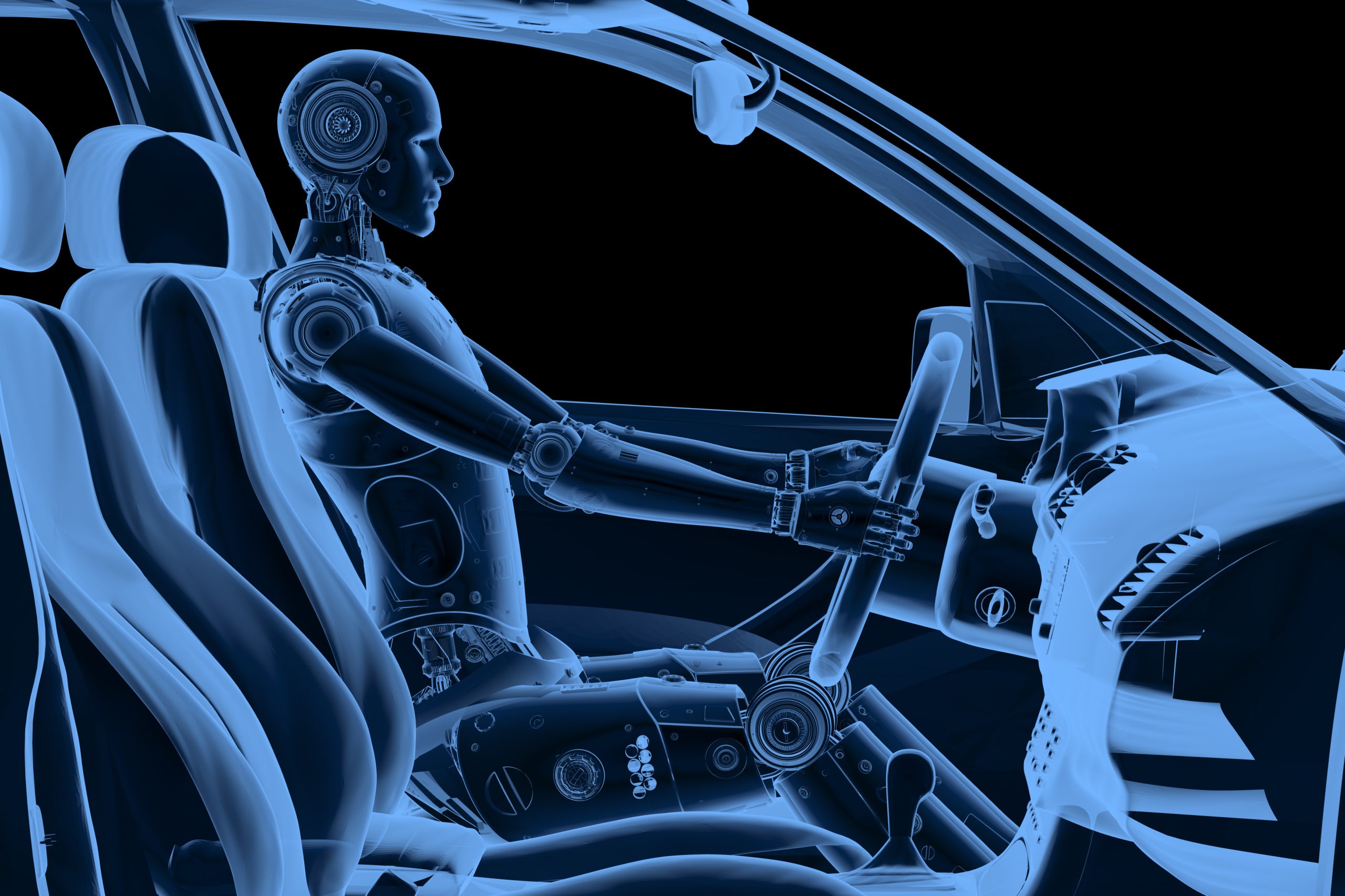
Vehicle subscription company Fair unveiled a study conducted in early May by Researchscape here in the U.S. with eye-opening findings. Among them, one in ten Americans does not feel safe in any form of transportation right now – period.
But 80% are humming along with Gary Numan – a large group of consumers who feels the greatest sense of security and comfort while in their cars.
And Researchscape’s data reveals that nearly three in four Americans say they’ve taken a drive as a “mental health escape” while maintaining COVID-19 isolation standards. That was confirmed in our study of radio fans highlighted above.
3. Let’s skip the dealership – A blog posted this week by Jeremy Marcus, Client Insights Analyst for Comscore reveals new findings about car purchases – including the trend to shop online.
In “What does a ‘new normal’ look like for automotive?,” the data shows those in the market for a new vehicle took a big jump in May, getting closer to the levels reached a year ago.
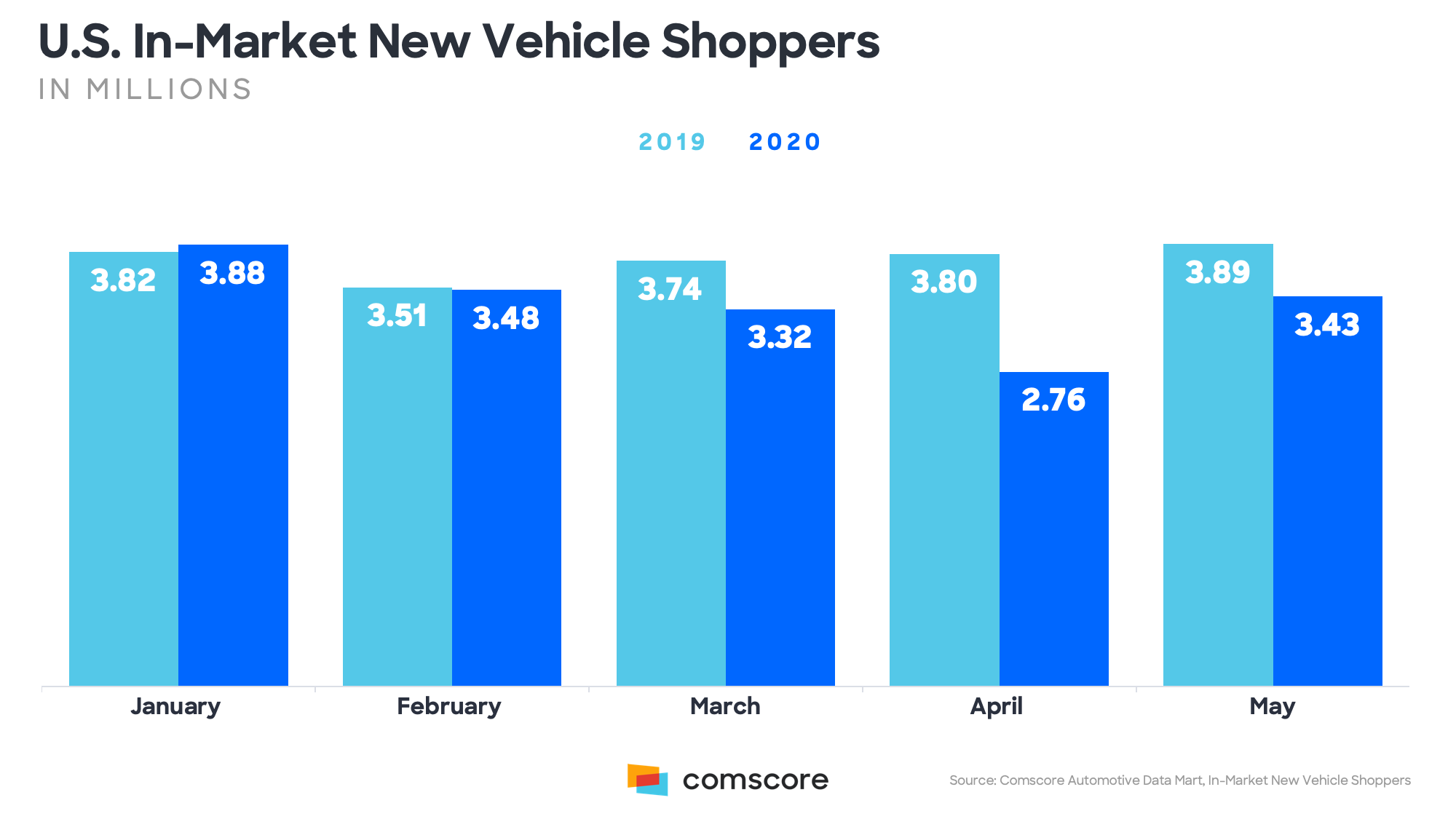
But perhaps the most important difference year-to-year is how and where consumers intend to shop for that next car or truck.
Once again, safety and concerns about human contact are the change agents. And they are beginning to impact how these consumers may do business. That may mean skipping past the dealership altogether.
A way to think about this changing trend is to study web visits by the shopping domains of car companies like General Motors and Fiat Chrysler. In the former’s case, they are marketing their program as “Shop. Click. Drive.” It’s a soup-to-nuts process that includes shopping, loan calculation, and eventually dealer contact and delivery.
Here’s the web visit results for both of these sites:
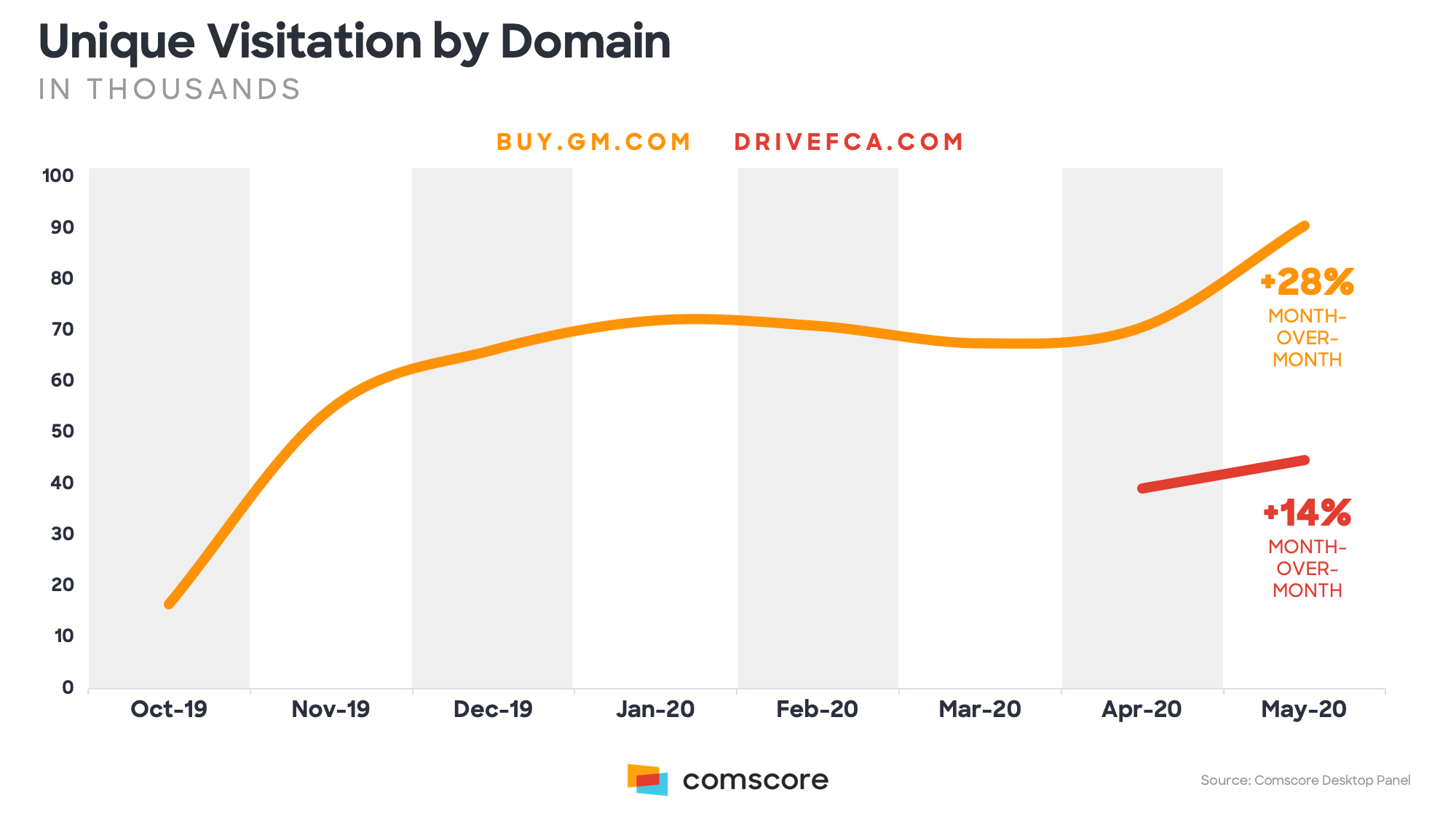
The term “showroom traffic” could become as dated as the “rotary dial phone” in the coming years – or maybe months.
Marcus then raises this important issue:
“The emerging question, then, is whether automakers can reach enough consumers through incentives and worry-free shopping and purchasing opportunities, to convince the shifting pool of potential buyers that acquiring a car right now is both financially tenable and safe from risk of infection.”
That’s the challenge. The good news is that the positive signs are in place: people are driving again and they’re shopping.
They feel safest going from Point A to Point B in their cars – another great omen for radio broadcasters. The more they drive, the more radio they’ll consume. How can programmers rethink and recraft their on-air messaging to reflect this changing consumer mindset?
And finally, radio’s sales departments have absolutely got to get on-board the changing ways in which Americans want to shop for and ultimately purchase or lease their next car.
It will increasingly move away from car dealer remotes, and be replaced by marketing and messaging that drives listeners to landing pages, while assuring them about the safety of doing business with local dealerships. And that’s where radio can play a huge role, especially with those persuasive testimonials delivered by trusted radio personalities.
Radio’s relationship with the car is changing. But smart strategies and new tactics can keep broadcasters in the driver’s seat.
- Media And Technology In 2025: Believe It Or Not! - April 18, 2025
- In Radio, You Just Never Know - April 17, 2025
- The Secret To Making A Great Podcast (And Great Radio) - April 16, 2025




My younger friends and relatives (under 35) don’t listen to the radio in cars, they plug their phones in and listen to music or podcasts. Newer cars have built-in connectivity. The total installed base for new vehicles with in-vehicle infotainment, or IVI, systems is expected to grow 30% in 2019 and Ford has announced that it will equip the entire lineup of Ford cars with 5G modems in anticipation of a 2022 rollout, despite the industry standard for 5G connected automobiles still undecided. The prediction is by 2025, this connectivity will be standard in all vehicles. Just because people are and will be spending more time in cars doesn’t mean they’ll be listening to radio.
Susan, thanks for the comment. The post did not suggest radio is the only thing consumers listen to in cars. But the newest data show it continues to dominate usage. How that changes when just about every car is “connected’ remains to be seen. But in the main, people driving again is a positive for radio.